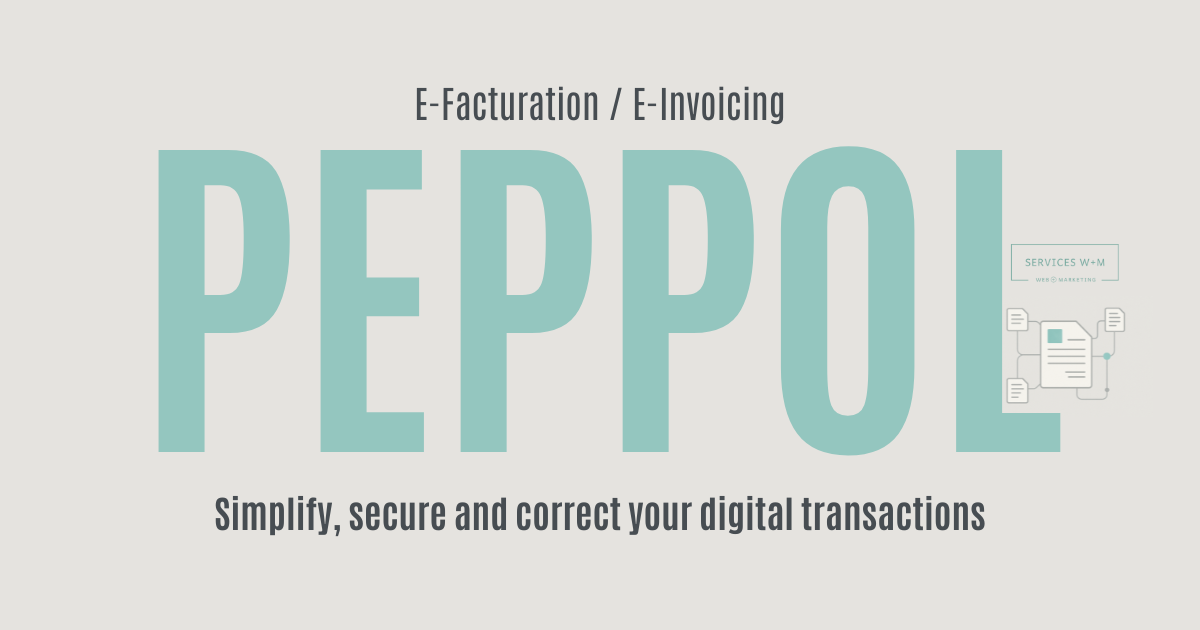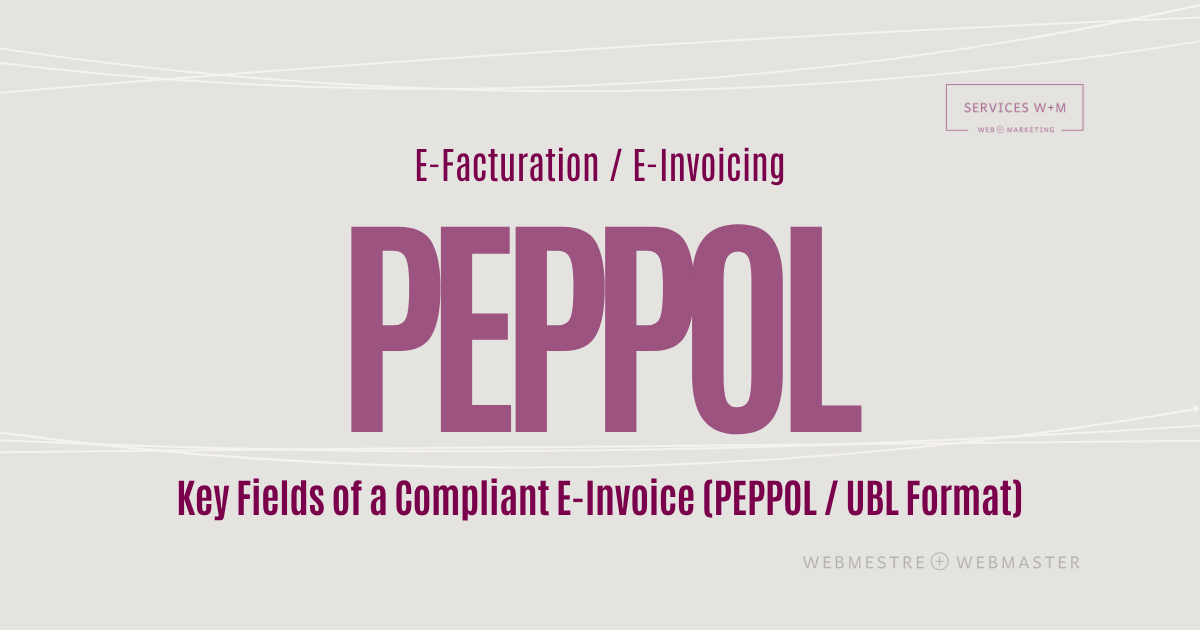PEPPOL: The New Language of E-Invoicing
PEPPOL and e-invoicing in Canada: learn how to prepare your business for upcoming digital invoicing standards and structure your invoices according to international (UBL/XML) formats.
Hello,
The term “PEPPOL” is appearing more and more often in conversations about digital transformation and modern business administration. But what exactly is it?
In short, PEPPOL is a secure exchange network that allows businesses to send and receive standardized electronic invoices, a kind of universal language for commercial transactions.
In this article, we explore what PEPPOL means for Canadian businesses and how to prepare for it, as a complement to our November feature on e-invoicing in The Monthly Ticket.
Enjoy your reading, Marketers.
MusicScore: This article was written while listening to Twist Of Fate from Olivia Newton-John.
PEPPOL: A Secure Framework for Digital Invoicing
Already adopted by many European countries, the PEPPOL network is gradually expanding across Canada and particularly within modernization projects for B2B and B2G invoicing (business-to-business and business-to-government).
Its main goal: to ensure that two different accounting systems can exchange documents automatically, without errors, omissions, or duplication.
For Quebec and Canadian SMEs, this represents a valuable opportunity to anticipate upcoming standards and simplify financial operations. Even small businesses and freelancers can begin preparing today, simply by choosing a PEPPOL-compatible accounting solution or consulting their web provider.
Why It Matters
PEPPOL compliance helps streamline payments with large organizations and public institutions. It also:
Reduces delays and manual entry errors;
Improves traceability and data security;
Enhances credibility and professional reliability.
In short, it’s one more step toward a modern, automated, and trusted business environment.
Getting Ready for PEPPOL Compliance
Even though PEPPOL is not yet mandatory for all businesses in Canada, preparing early is both wise and strategic. Here are a few simple steps to start the transition:
Check your accounting software. Platforms like Acomba, QuickBooks, and Sage already offer or are developing modules for structured e-invoicing.
Contact your web provider or digital manager. If you manage transactions through a website, it may already support PEPPOL-compatible data exchanges — even before regulations come into effect.
Standardize your invoice templates. Use a clear format with standardized fields (unique number, client ID, date, tax details). This will simplify the move to automated exchanges.
Keep invoices in dual format. Continue generating your usual PDF invoices, but gradually include a structured XML or UBL format; already recognized by the PEPPOL network.
Train your team. Make sure your accounting and administrative staff understand the basics of e-invoicing. Awareness today prevents errors later.
Even the smallest business can take the first step by discussing PEPPOL with their accountant or consulting the technical guides available at peppol.org.
Key Fields of a Compliant E-Invoice (PEPPOL / UBL Format)
Even though PEPPOL standards are still rolling out in Canada, businesses can already structure their invoices using the universal data elements recognized internationally.
These fields allow accounting systems to read invoices automatically — the core strength of e-invoicing.
1. Invoice Identification
InvoiceNumber – Unique invoice number
IssueDate – Date of issue
InvoiceTypeCode – Type of document (invoice, credit note, etc.)
DocumentCurrencyCode – Currency (CAD, USD, etc.)
2. Supplier Information
AccountingSupplierParty / PartyName – Legal business name
CompanyID / TaxScheme – Business Number and tax IDs (GST/QST)
PostalAddress – Full address
Contact / Email / Telephone – Contact information for support
3. Customer Information
AccountingCustomerParty / PartyName – Customer name or business name
CompanyID (or BusinessNumber) – Customer identifier (optional for individuals)
PostalAddress – Full billing address
4. Transaction Details
PaymentMeans – Payment method (transfer, credit card, direct deposit, etc.)
PaymentDueDate – Due date
InvoiceLine – Each service or product line includes:
Description – Product or service name
Quantity – Quantity
PriceAmount – Unit price
LineExtensionAmount – Subtotal before tax
5. Taxes and Totals
TaxTotal / TaxAmount – Total tax amount
TaxSubtotal / TaxCategory – Breakdown of taxes (GST and QST separately)
LegalMonetaryTotal / PayableAmount – Total amount payable
6. Optional but Recommended Data
OrderReference / ContractDocumentReference – Related purchase order or contract
AdditionalDocumentReference – Attachments (quotes, delivery slips, etc.)
AccountingCost – Internal code or project reference (for budgeting purposes)
Even if you’re still using a traditional accounting system, you can already:
Keep these fields in your PDF template (for future structured use);
Ask your software provider if they can export invoices in XML/UBL or JSON;
Store your invoices in timestamped digital folders — to simplify compliance later.
A compliant e-invoice isn’t a “different” invoice — it’s your existing invoice, enhanced with structured, machine-readable data. It’s the foundation of smooth, error-free digital accounting.
Conclusion
E-invoicing and the PEPPOL network aren’t passing trends. They’re practical tools to simplify management, strengthen trust, and save valuable time. Every business can start this digital shift today, at its own pace, and get ready for tomorrow’s standards.
To learn more, read our full feature in The Monthly Ticket – November 2025: E-Invoicing: Understanding, Adopting, and Securing Your Digital Exchanges.
Thank you for reading,
See you on the Blog.
Jeff Maheux
Cr images: Production Services W+M.
Websites - creation, management and design
I edit the content of existing sites via CMS in addition to creating sites with WordPress and Squarespace. I have been producing website content as a webmaster since 1998.
I help companies get their first website up and I improve the performance of existing sites.
Yes, I’m Mr. Analytics and my reaction time to new digital marketing is daily, which allows my clients to have optional and trend-cutting tools.
Follow the content of the marketing blog and participate in the articles by commenting, with respect, on the content of the site, intended for Quebec companies operating in the digital market.
Jeff, A W+M Agent.









Artificial intelligence is quietly becoming part of our everyday habits — often without us noticing. From marketing tools to lunch breaks, it slips into our simplest gestures. Maybe the real revolution isn’t its power, but the fact that it’s becoming routine.